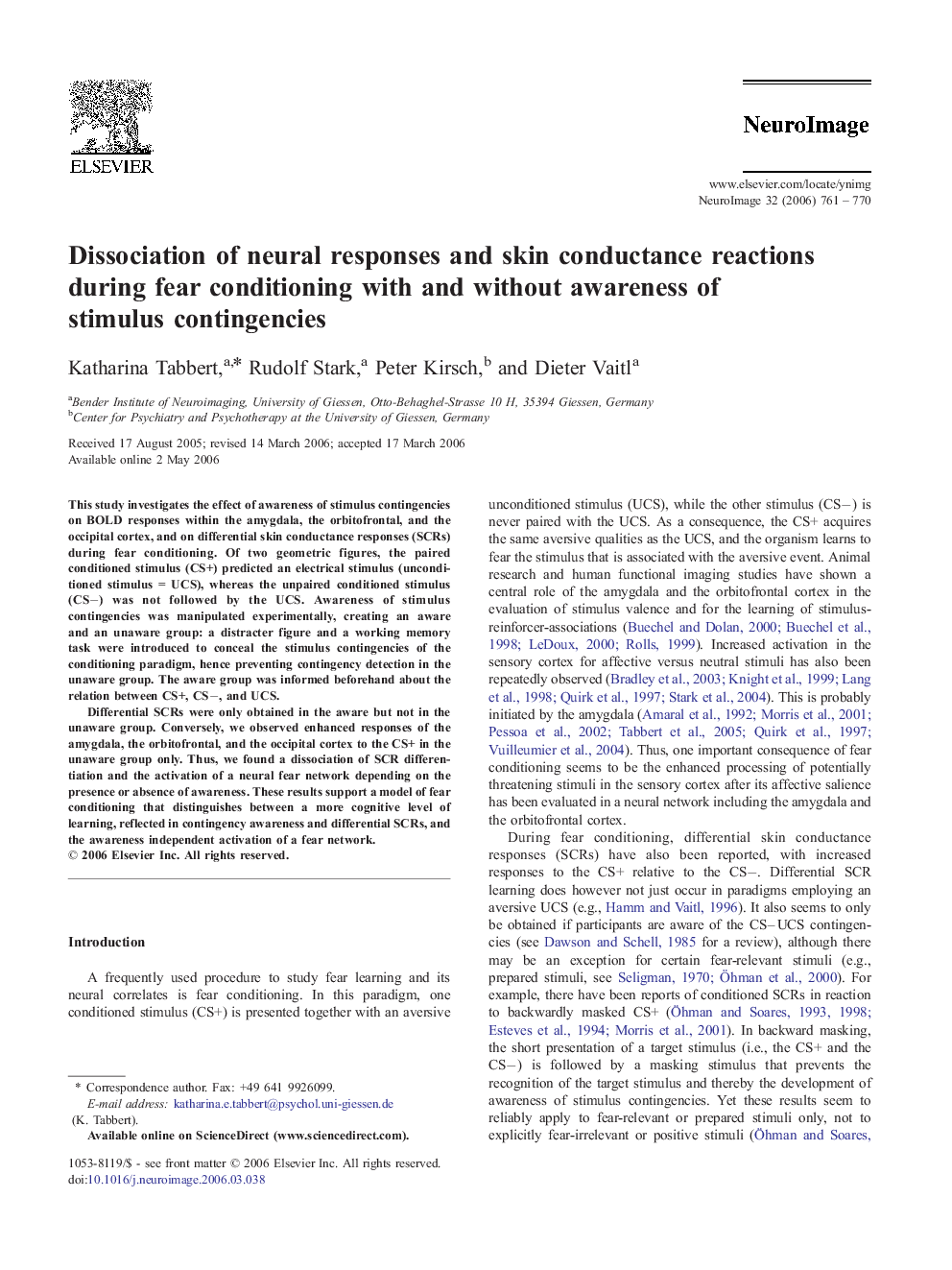| Article ID | Journal | Published Year | Pages | File Type |
|---|---|---|---|---|
| 3074270 | NeuroImage | 2006 | 10 Pages |
This study investigates the effect of awareness of stimulus contingencies on BOLD responses within the amygdala, the orbitofrontal, and the occipital cortex, and on differential skin conductance responses (SCRs) during fear conditioning. Of two geometric figures, the paired conditioned stimulus (CS+) predicted an electrical stimulus (unconditioned stimulus = UCS), whereas the unpaired conditioned stimulus (CS−) was not followed by the UCS. Awareness of stimulus contingencies was manipulated experimentally, creating an aware and an unaware group: a distracter figure and a working memory task were introduced to conceal the stimulus contingencies of the conditioning paradigm, hence preventing contingency detection in the unaware group. The aware group was informed beforehand about the relation between CS+, CS−, and UCS.Differential SCRs were only obtained in the aware but not in the unaware group. Conversely, we observed enhanced responses of the amygdala, the orbitofrontal, and the occipital cortex to the CS+ in the unaware group only. Thus, we found a dissociation of SCR differentiation and the activation of a neural fear network depending on the presence or absence of awareness. These results support a model of fear conditioning that distinguishes between a more cognitive level of learning, reflected in contingency awareness and differential SCRs, and the awareness independent activation of a fear network.
